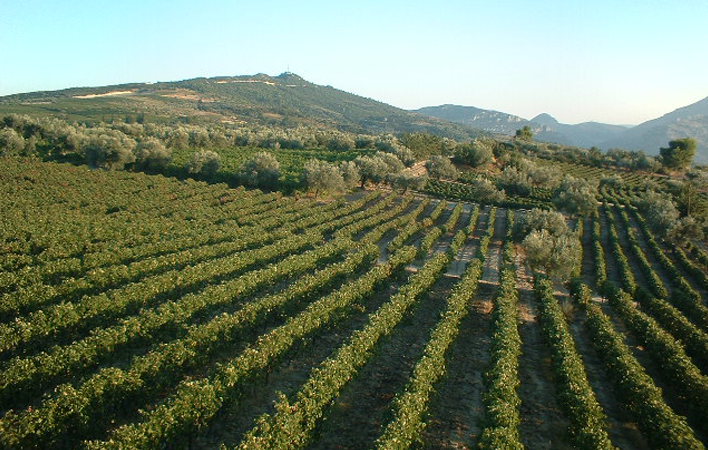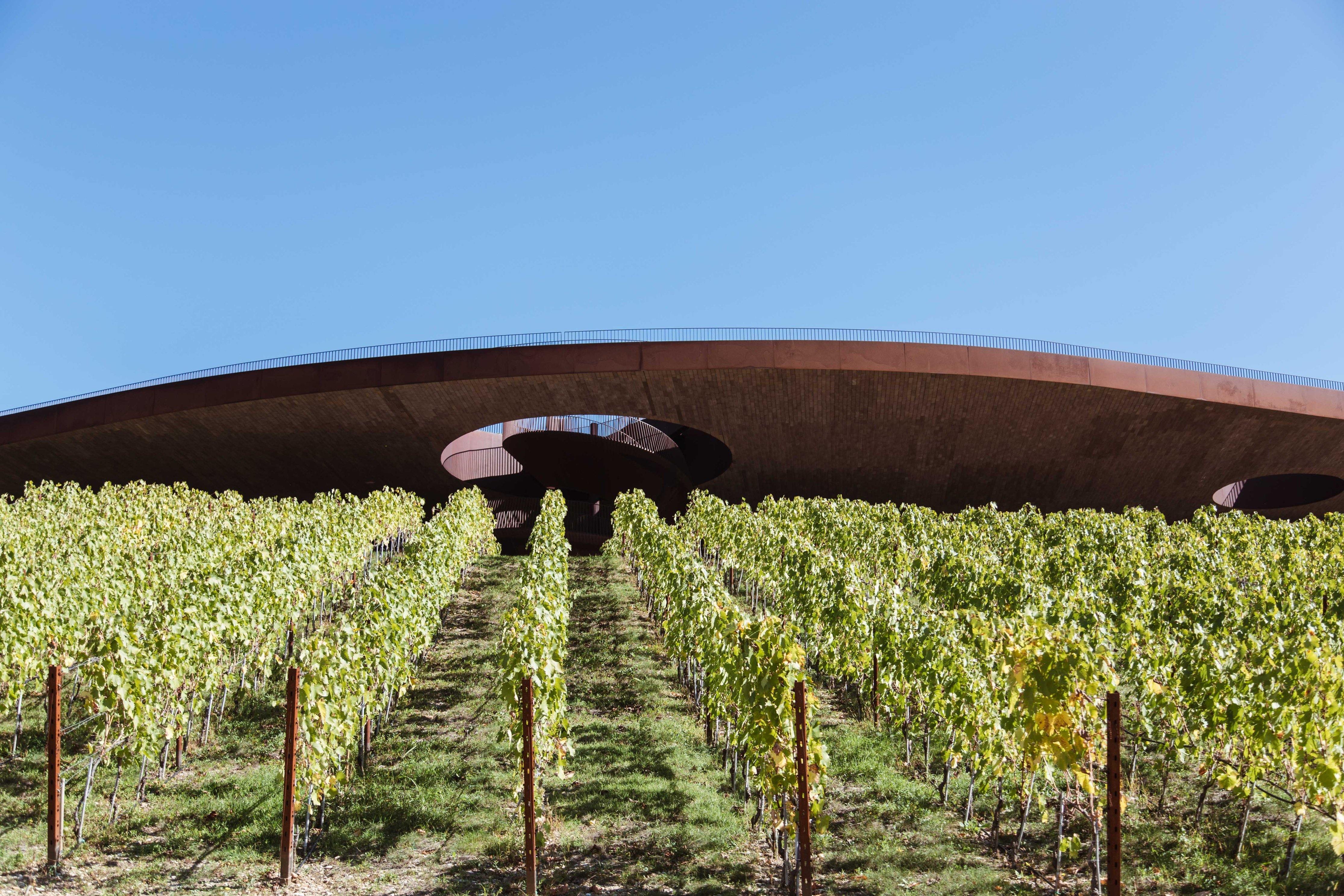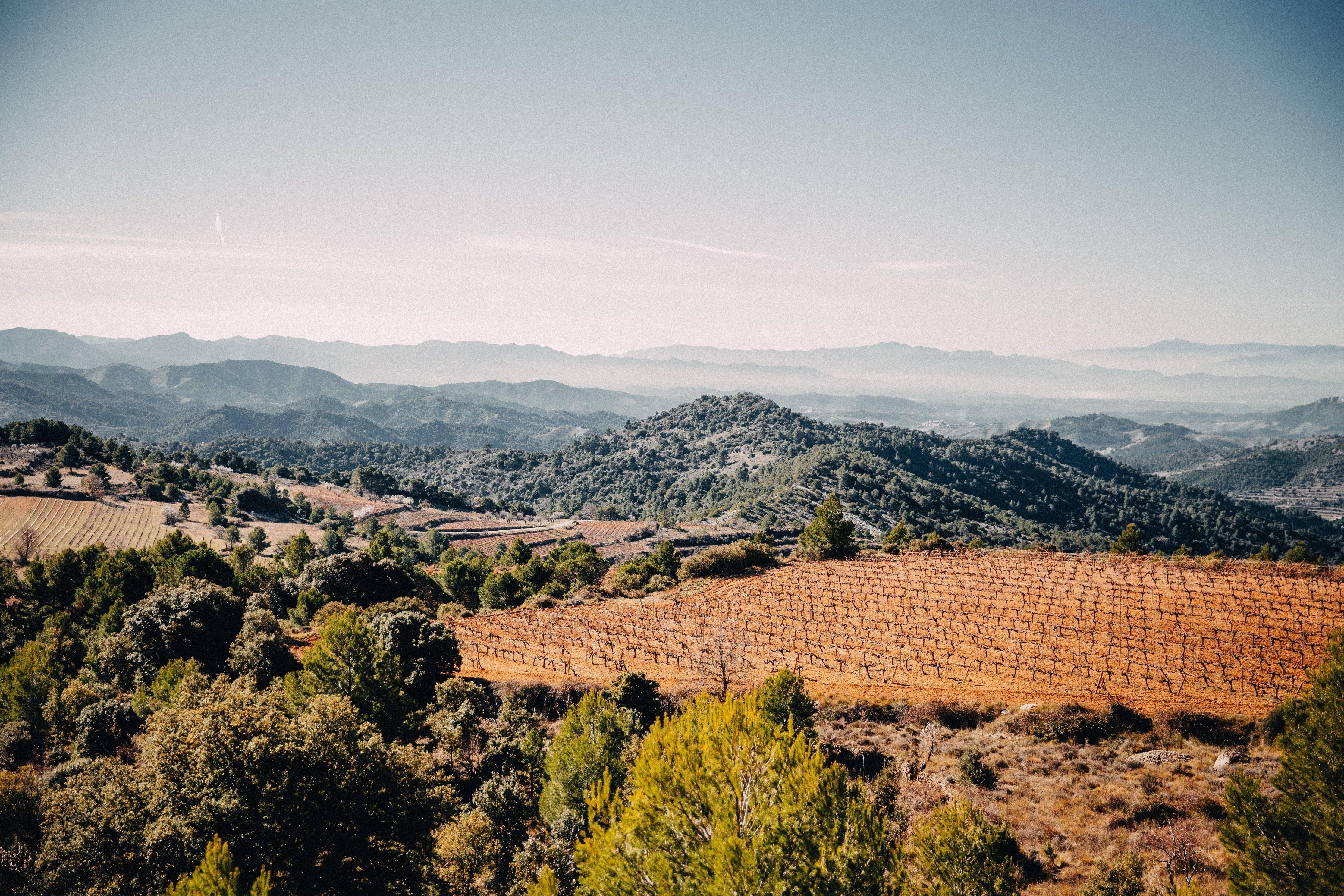These days the role of oak in wine has become a much more topical issue – many wine drinkers adore the smells and flavours that oak can impart to a wine – whilst others are less sure. So, I thought it timely to look at the role of oak and – along the way – highlight some classical oaked wine examples from the Vino Gusto portfolio, but also, I hope an interesting example where you can directly taste between an oaked and unoaked version of a very similar wine.
In the nascent days of winemaking the producer was faced with two simple choices when wanting to ferment and age/store their wine – either clay/ceramic vessels or wood. When using wood winemakers noticed that with certain types it was not only a storage vessel but also imparted over time (attractive) additional aromas and flavours. So began the long association of wine with wood.
Today oak (in particular) wooden barrels remain a vital component in both the making and aging of wine and in several cases have become a fundamental component of the very quality and style of the wine itself. A couple of examples include classic White Burgundy with the barrel fermentation and aging of Chardonnay grapes, and red Rioja at Crianza, Reserva and Gran Reserva levels. But what do oak barrels do?

Vanilla, coconut, spices, smoke, chocolate, even coffee – smells and flavours which have all been associated with oak aged wines
What Does Oak Do to a Wine?
Oak barrels can assist in winemaking to affect the colour, produce additional aromas and flavours, change the tannic profile of red wine, and expose the wine to controlled levels of oxygen as part of the production and aging process. By contrast hermetically sealed stainless-steel tanks are completely neutral and anaerobic.
Oak barrels are porous, which allows for low level of evaporation and controlled oxidative reactions to occur, but at levels which do not spoil the wine or, in the short term, physically oxidise it. This also allows for secondary aroma and flavour elements to develop and in the case of red wines gently oxidise and soften the more aggressive tannins present from the skins of the grapes.
The chemical properties of the oak itself affect the wine. Phenols within the wood interact to produce vanilla (vanillin) notes to give an example. The degree of "toasting" in the construction of the barrel imparts – not unnaturally – smoky or toasty notes and if highly toasted can increase the density of the colour. Wood itself contains tannins and these can dissolve into the wine and assist in the overall anti-oxidative properties for when the wine goes into bottle.
White wines fermented and aged in oak (classically Chardonnay) will not only adopt oak aromas and flavours but become much more “textural” on the palate. This can be enhanced by the additional practices of aging on the lees and the wine undergoing secondary malolactic fermentation. Also, the oak itself may impart a small level of dissolved wood tannins into the wine to enhance its structure. Again, as per a red wine, the toast level will impact on the colour and aromas if high with smoky and spicy notes.
Of course, the longer wine spends in contact with the oak barrel the stronger its influence will be. If the wood is also brand new and the cask small (in relation to the volume of wine, it holds) - typically 225-228lt - the oak intensity levels will also subsequently rise. But this must always be and remain in balance – an over-oaked wine will be just that – all oak and woody notes. So many winemakers talk about the oak element being in “the background, or the framework”, to their wine. In addition, the more delicate a grape variety intrinsically is, the less oak it needs before if overrides the subtle nuances of the grape. A good example of this is with Pinot Noir (eg Red Burgundy). Of course, vice-versa, for “bigger” varieties such as Cabernet Sauvignon (eg Left Bank Bordeaux).
The Most Important Types of Oak Used
As said the main wood used in the world of wine is oak, but oak itself comes in different forms and influences. The two most popularly used species are French and American oak.

The American species of oak is called Quercus Alba, which is a white oak that is characterised by being quick growing and has wide grains and relatively lower levels of wood tannins. It is found in most of the Eastern USA, along with other areas such as Missouri, Wisconsin, and Oregon. These woods impart a particularly intense vanilla (vanillin) note to the wine.
In France, both the Quercus Robur (common oak) and Quercus Petraea (white oak) are grown and used, with Quercus Petraea preferred for its finer grain and richer contribution of aromatic components. French oak comes mainly from five areas Allier, Limousin, Nevers, Tronçais, and the Vosges. Each has subtle differences and nuances which provides the winemaker with blending options, particularly when the element of toasting also comes into play.
Traditionally, the use of American white oak has played a significant role in the quality and styling of red Rioja – so much so that for some the oak (vanilla) element is as important as the fruit flavours and origin itself.
But It is Not Always About “Oaky” Flavours – the important role that barrels play in maturing wine
And for certain wines - where the impact of prolonged but controlled oxidation is vital to the style - then the (oak) barrel becomes a very important mildly porous storage vessel in creating that environment to achieve the result. This is essential in the production of many of the great fortified wines of the world. Classic example here include:
- Sherry – Fino, Amontillado, and Oloroso styles (7-20 years +)
- Madeira – nearly all styles (3-20 years+)
- Reserve Tawny Ports – eg 10,20,30,40 year old cask aged examples
- Australian Rutherglen Liqueur Muscats (3-50 years+)
In these instances, the flavour or aromas of the wood become almost irrelevant as the focus in on creating an environment for producing tertiary aromas and flavours, rather than any secondary or woody notes from the container itself.
Other oaks used include Slavonian oak – Quercus Robur – favoured by many traditional Italian producers for its tight grain and lighter aromas and tannic levels. For these producers the role of oak is not about imparting oaky flavours but for storage and gentle oxidative aging. Hungarian oak also has a fine reputation with its Quercus petraea - particularly from the volcanic Zemplén Mountains region with a tight grain and very subtle flavour impartment.
Is The Use of Oak “Eco Friendly” Though?
But this all comes with some consideration for the forest themselves. In cooler climate origins the ideal wood harvested is at least 80 years old and in general one tree provides enough wood for just 3-4 x 225lt new casks. In addition, harvesting is ideally done in the winter when the sap has receded to the root ball. Both American and French authorities take the sustainability of their oak forests extremely seriously and tree cutting is regulated to ensure these forests remain sustainable for the future. In addition, I would add two other points - the rising cost alone is acting as a regulator to suppress demand and, in general, many producers and regions are using less (new) oak in their wines than say 20 or 30 years ago for stylistic reasons.
The Processing of Oak (Barrels)
Once the wood is harvested it still needs to seasoned (aged usually in the open air) prior to use – coopers will split or saw the wood along the grain and age for between 24-36 months in the open air. These spilt or sawn segments are called staves. This process mellows the oak and prepares it chemically to be in the best condition for use in relation to the making and aging of wine. The wood is then ready to be fashioned and built into a cask by these amazingly skilled craftsmen.


Please see this excellent short film from Jordan Winery California which outlines brilliantly how barrels are made and how complex and skilled the whole process is.
The staves are heated, traditionally over an open fire, with water and when pliable are bent into the desired shape of the barrel and held together with iron rings. Coopers also use steam to heat up the staves which assists in making a barrel less burnt or toasty. As a result, winemakers can order barrels either with a light, medium or high toast subject to the style of wine they wish to make. Clearly a high toast barrel will impart more smoky toasty notes, les tannins (as they are burnt) and will also deepen the wine’s colour when aged. Conversely the lighter the toasting the lighter the oak flavours – per se - and tannins that will be imparted. And of course, the winemaker can use a mix of different toast levels as well as different ages of cask to create a range of blending options for the same base wine.
So, when your winemaker places their order for new barrels, they have the choice of 3 boxes to tick:
- High Toast
- Medium Toast
- Low Toast
Of course, you can always order and use all three which opens more options for blending the finished wine.
In practice with regards to winemaking the lifespan of a barrel is about 5 years maximum before all the benefits and flavours have become use up or leached. And with age, barrels are more prone to leaking which risks excessive exposure to oxygen and spoilage.
And barrels don’t come cheaply. Highly prized, top quality French oak barrels can cost upwards of €750! But there are other options for lower priced wines and those who want a touch of oak but not too much, these include just using the staves themselves in a vat of wine or oak chips. At around €8 per kg, they offer a highly efficient and cost-effective way to do this, but obviously cannot replicate the intensity and polish which a barrel can deliver.

Where Oak Doesn’t Work – or is Actively Avoided
By contrast, wines where all the character and quality is about the intrinsic and exuberant flavours and aromas of the grape – eg the aromatic varieties such as Sauvignon Blanc (with a few exceptions), Riesling, Muscat, Torrontés – the role of (new) oak becomes irrelevant, and stainless steel the clearly preferred container option.
To take Riesling as an example the toasty and vanillin notes – if used – would be in direct conflict with the sheer exuberance, aromatic purity, and overt fruitiness inherently found, and enjoyed, in this grape variety.
Stylistic Choices – The Chardonnay Conundrum
A proportion of wine lovers have said that they do not particularly like Chardonnay – and I sometimes believe it’s because of the style in which this grape has been made rather than necessarily the grape itself. As mentioned earlier – and in the Blog on Chardonnay (last October) – the majority of Chardonnay of the world are barrel fermented and lees aged producing a richer and much more textural style. But there are Chardonnays made where oak plays little or no part in the styling of the wine – the most famous of which is Chablis. In addition, because the growing area is relatively cool there is a crispness and vitality to the wines which is very appealing, and I would encourage “nonlovers” of Chardonnay to try this comparison and see it the issue for you is the use of oak – not the grape? Both these wines are well made and from very reputable producers and by contrast the Hartenberg Chardonnay comes from a warmer growing area (Stellenbosch) and is barrel fermented (I believe in a sensitive way) but it is still “oaky”. Then compare with the elegant Domaine Laroche Chablis which has had no oak but in every other aspect has ben made in the same way as the Hartenberg – although from a much cooler growing climate, so the acidity level will be higher.
In summary
But for most red wines in the world, most aged, fortified wines, and most Chardonnay (oak) barrels are, and will remain, a vital part of the quality, style, maturation, and flavour of the product. Overall, the role of the wooden barrel has come on dramatically from the early days of just being a purely practical fermenting and storage vessel. Oak has become a mainstay in both the chemistry of making and then aging of wine as well as a flavour and aroma contributor. Today, I believe oak is being used more sensitively and empathetically in wine production and aging in general which I think can only be a good thing for the winemaker and drinker.
Vino Gusto Selection
Let’s finish with some Vino Gusto wines which illustrate the role and use of oak well – and in different formats and guises. There are two barrel fermented white wines and two oak aged reds.
The Lestrille Capmartin Bordeaux Blanc showcases an interesting style, not least because Sauvignon Gris is one of the main grapes in the blend but also because is barrel fermented in new oak, but so well that you only taste and feel the oak in the background. By contrast the Alheit South African Chenin Blanc is barrel fermented and aged in old oak so this element is very much about giving the wine structure and texture rather than overt oak notes. By the way, Alheit only produce white wines and are broadly regarded as one of South Africa’s finest producers.
Onto the reds and I thought let’s look at an overtly oak aged and traditional red and one where the oak is firmly in the background. I must recommend a classic Rioja here and none other than one of the region’s finest and most traditional producers R. López de Heredia Tondonia Viña Bosconia, which is aged for 5 years in American oak seasoned, crafted, and made in their own cooperage. This is a sublime example of traditional red Rioja. In fact, R. Lópes de Heredia value the importance of oak so highly, there is an interesting article on their own website, detailing their own use of oak.
Then by contrast is the Kiwi Trinity Hills Gimblett Gravels Syrah from Hawkes Bay in the North Island of New Zealand, where the wine is aged in large and older French oak barrels, so the oak effect is very much in the background and there for structure and texture. This wine is very much designed to replicate the elegant North Rhône style of Syrah rather than the richer Australian style by the way.


















Leave a comment